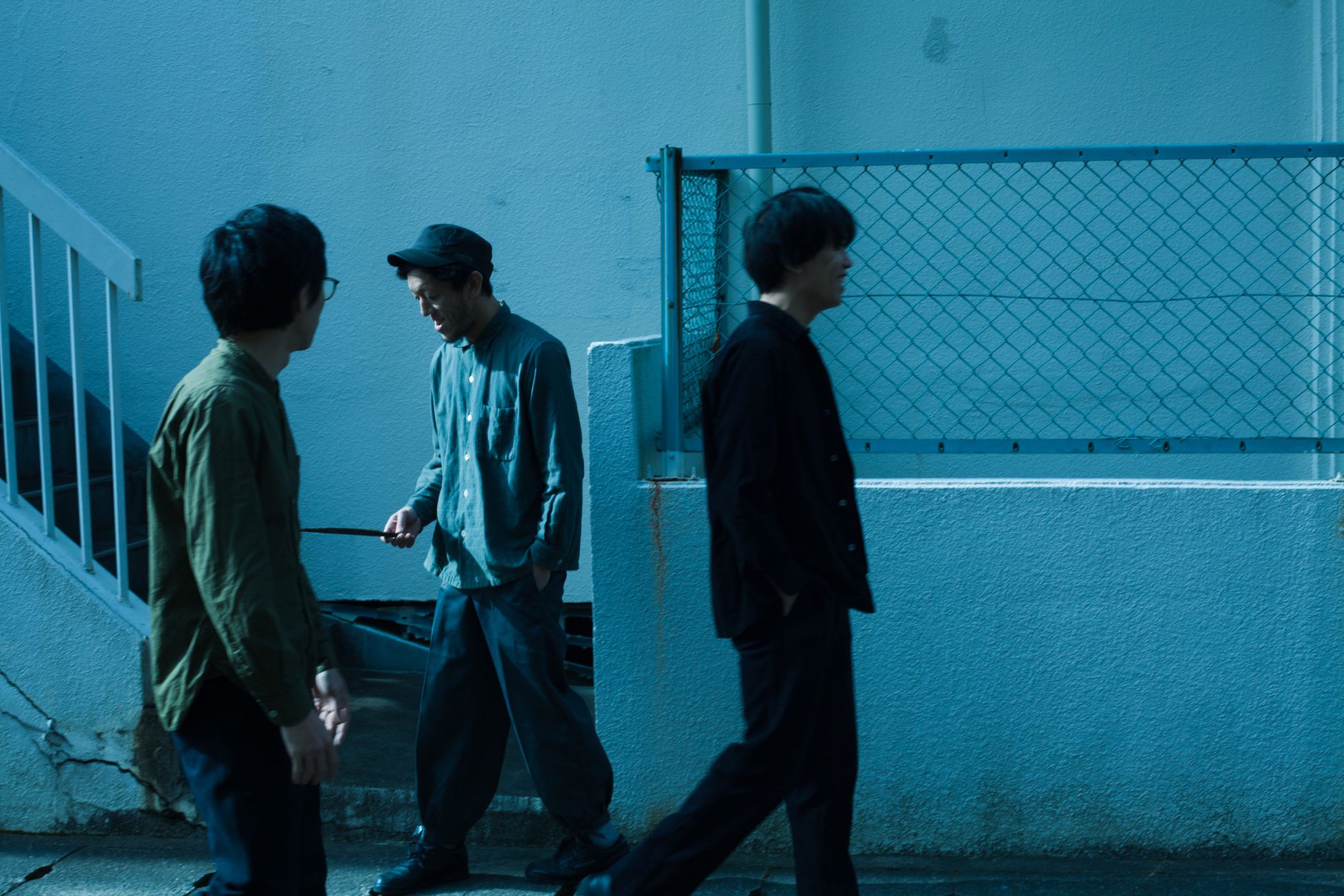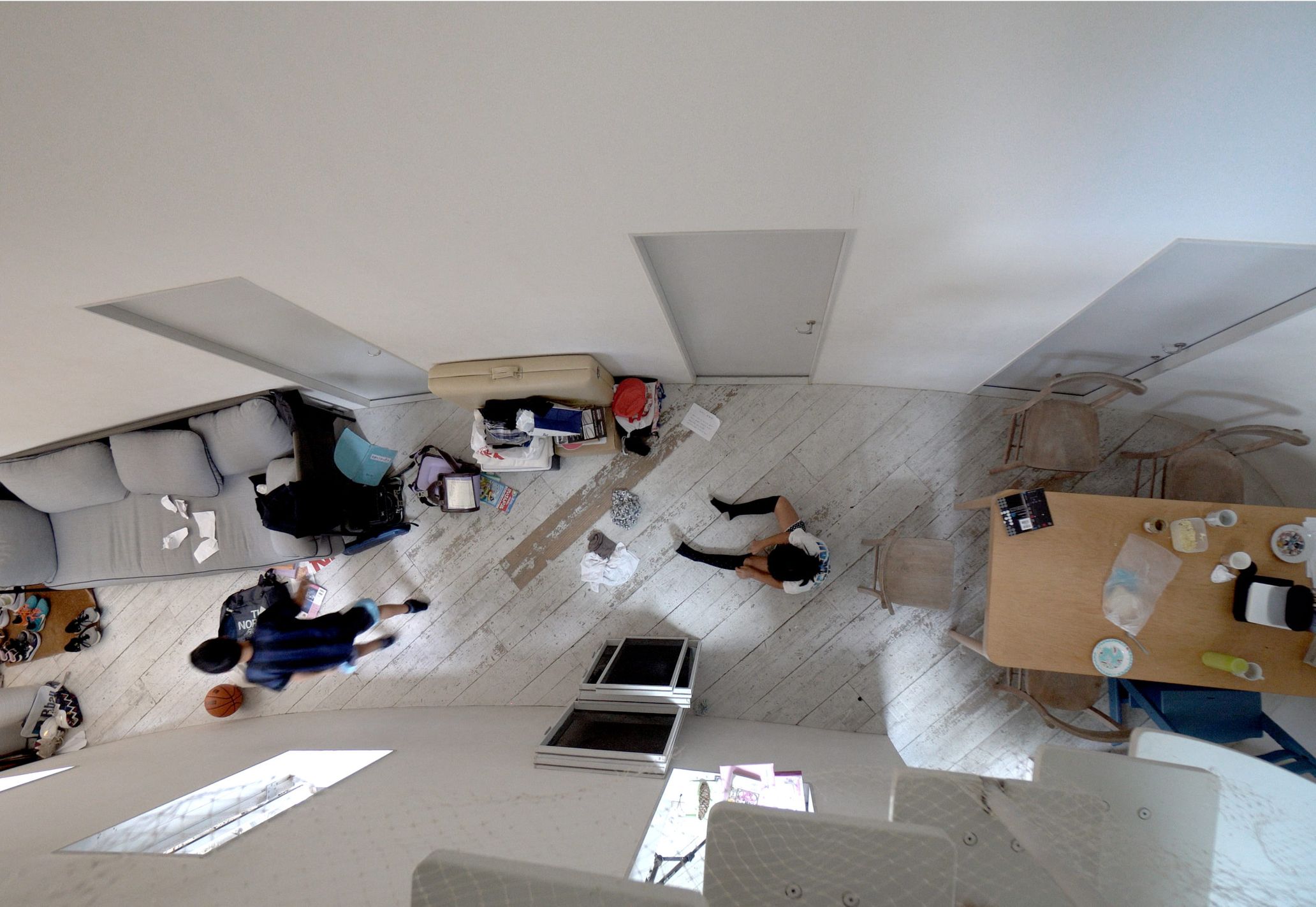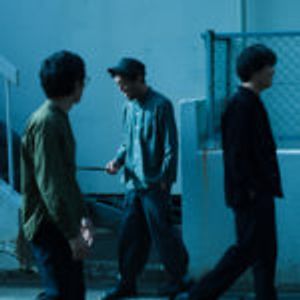Stumbling—an event usually seen as an exception. Just like the word walk does not include stumble as a precondition, stumbling is perceived as something that shouldn’t happen.
We provided the theme, Observation of Stumbling, and asked a DJ, an architect, and a graphic designer, among others to use this as a basis for their own work in their respective fields. Here’s the result. The moment of an accident, the unexpected, something relegated to the outer limits of consciousness, failure, discrepancies, what threatens stability… By shifting our attention to stumbling, we aim to confront those matters.
It made us think again about stumbling. What exactly is it? Why did we even choose this word as a theme? To us, understanding stumbling means to also understand rhythm. Rhythm is not something that is only heard. We hope to share an experience of rhythm that could be read and seen as well.
Kukangendai
DJ FULLTONO
Concept MIX “BPM and Feels”
In dance music, stumbling is the most fun part. It is what attracts people the most. For example, the BGM you hear in a cafe may not need this stumbling. But stumbling may be essential to shake bodies. I created this DJ MIX while tossing around this idea. Please note the sensory speed when you listen to the mix. I focused on that and threw in various elements into it.
Before I talk about stumbling, I must explain first what a steady rhythm is. A steady rhythm in dance music is a repetitive rhythm. Its origin is in funk and soul music after the 60s: Kraftwerk who released Autobahn in 74, and Giorgio Moroder, who worked on Donna Summer’s “I Feel Love” in 75. These musicians came up with a beat that repeats over and over right from the beginning of the song. This technique was later transformed into house techno music and has been passed down to the present day. This repetitive beat is the epitome of a steady rhythm.
When you hear a beat for the first time, it is sometimes difficult to understand how each sound affects the rhythm. However, most of the sounds were put there for a reason. In my opinion, sounds either move forward or move around. If we are to visualize the sounds, they always move from left to right. In other words, they are placed there to move forward. When they are placed at equal intervals, the speed is the same throughout, but if one of the sounds is put slightly ahead of another, the sensory speed becomes faster at that particular point. The word fast here does not mean a fast or slow BPM. When the sounds are placed at equal intervals, the speed is the same as the BPM but the movement created by shifting the sounds generates a part where the sensory speed is different. It is the repetition of such small changes that creates the groove.
Another way to look at it, is to think of it as different BPMs progressing in parallel to the BPM of a single beat played. You may, or have the illusion to, hear a different BPM from that main beat. It is called polyrhythm. This experience of sensory speed is interesting. For example, did you know that iTunes shows you the BPM of a tune? When I DJ, I use a lot of 160BPM tunes, but I often see misquotations like 80, 120, 107BPM, etc., even though it’s supposed to be 160BPM (theoretically, it’s not a mistake, but I’ll leave the explanation for now). It is actually the best part, because such tunes may also have a groove with a different BPM.
What is a good groove, then? Just adding more notes or simply looping the same pattern won’t make a good beat. The most important thing is to be organic, even if it is a machine-made rhythm. For example, using the human body as an analogy, when we stumble, we more or less move in the same way to avoid falling over. So, when you shift one note for the drum, the choice for the next note is naturally limited to a few patterns. The sound of the rain may sometimes sound funky, and as long as we play and listen to music, we don’t get attracted to inorganic beats. The same applies to music composed on the computer. Whenever I talk about this, I always think of the words of Spanish architect, Gaudí. When Gaudí designed a building, he would say that a beautiful form is structurally stable, and we must learn the structure from nature. Applying that to dance music, it is most logical and comfortable to have a good beat in tune with nature. In other words, stumbling is an extension of a stable beat. Or put it in another way, it is an exaggeration of a stable beat.
I created this mix with all of the above in mind; some grooves are created intentionally, and some coincidentally, to be honest. DJing and beat-making is like a game of chess, where there are many ways to make a move. It gets refined in never-ending trials and errors.
In the 70s, electronic instruments were introduced, and a variety of beats were created. Human beings simply can’t stop searching for new beats. When a new genre comes into vogue, we naturally feel “It’s new! It’s the music of the future!” but it may be that music in its true form has been discovered then. When you think about where human desire and curiosity is ultimately headed, I cannot help but think that we are working on putting the concept of beat to its original form. That is what I have been thinking about lately.
You may not have to think that hard when you listen and dance to music, but if a fundamental question arises as to why you are attracted to a certain beat, you may find it helpful.
※You can listen the sound source in this magazine “TOKION”
DJ Fulltono
Based in Osaka, DJ Fulltono is signed on Booty Tune label. His My Mind Beats EP was released in 2014 and features his own take on the Juke sound of Chicago. My Mind Beats was selected for the yearly chart on America’s major music magazine, Rolling Stone. Regularly performs at Festivals in Europe and other locations.
Hideyuki Nakayama
Have you ever wanted to live in a hotel hallway?
I haven’t stayed at luxury hotels very often, but their corridors usually have long furry carpets so footsteps won’t be heard in the rooms. For the same reason, elegant chrome trolleys carrying room service have big wheels like off-road vehicles. The lighting is dim so guests can anonymously come and go. When you look down, a specially designed carpet with patterns matching the width of the corridor seems to extend forever. In the corners and dead ends, spotlights softly illuminate seasonal flowers and landscape pictures. Freshly-made ice cubes are always available. The next morning, after sleeping in, I walk the same corridor and I kind of like the way that behind half-open doors, messy bedspreads are bathing in sunlight with the roar of a vacuum cleaner. At the end of this corridor, in which the number of doors could reflect the number of nights and mornings spent here, is the elevator. It usually features a mirror and guests casually make sure they are presentable before going down to the lobby, ready for a new day.
You don’t hear about music stars renting out a whole floor anymore these days, but if I could do that, I’m sure I would spend the night in the hallway. I’ll have a couch, a stand light, and a bed brought out of the room, and I’ll have drinks that I wouldn’t normally drink, have them on a room service cart and spend time in the ambience unique to corridors. What would it sound like if you put speakers in a long, narrow, sound-absorbing space? It may be a silly fantasy, but sometimes I think about it.
The reason I’m talking about this is that I’ve actually designed a house that looks like a hotel hallway. I didn’t necessarily intend to do so but it turned out to be like that, if I put it correctly. Explaining the design process would be too long so I’ll save that for another time. The life of the family who lives there takes place in a hallway lined with the doors and scattered with furniture. When you open the door to Room 1, you are outside. The doors to Room 2 and 3 are connected to the bathroom and sanitary area, and the door to Room 4 (not available in Japanese hotels because four and death are homonyms) gets you to another little space outside. But all lined up, their differences disappear. The slightly curved corridor is somewhat similar to that of a cruise ship, perhaps because you have a row of windows only on one side. It is a short corridor, no more than 10 meters long, but since you can’t see the other end, it feels as if it goes on endlessly. It may also make you think of seeing a train from the window of your car when it is coming around a curve. If you turn around at the other end of the corridor, you will find a street corner instead of a landscape painting. From this street corner end window, this corridor looks like a dollhouse.
Hotel corridors, ships, trains, and dollhouses… You may think that the owner of this house had a tough time with my ideas. However, this house follows the regulations of landscape ordinance, strict rules on shape and color. There’s nothing special about the materials used, and the floors are just scaffolding boards covered with paint. I put underfloor heating instead of fine carpets, so you can lounge on the floor. Actually, the truth is, since wood for underfloor heating is expensive, I chose cedar wood planks that had been used for many years and were sufficiently dry. Architects know that a tunnel leading North creates a stunning gradation of light on the interior walls. And that explains why this particular shape, color, and materials were chosen. At the same time, you could also read this house as a fiction made up of a patchwork of silly fancy. Just like a rakugo (traditional Japanese comic storytelling), where two characters carry on their riddle without realizing that they are wrong about each other.
On which character’s side is the life of this house? Perhaps both, it’s very important for the designer to be aware of them both. The fantasy of a night spent in a hotel hallway is linked to the gap between knowing that it’s a hallway, and experiencing it in another way. It is more ambiguous than simple, immoral pleasures. Architecture, a discipline without instruction manual, is not limited to rules. It is also a result of social convention and, perhaps, commoditization. That’s why it imposes a yoke on us, without us even knowing it. Our work is always in between. No matter how cool skaters are when doing tricks on street railings, architects can’t design railings for that purpose. I don’t even have to ask you which is cooler, a dummy railing in a skate park or the street railing. Being cool is a hard thing. There may even be architects somewhere who secretly double the thickness of the street railing, without requesting it. Well, that’s it for now. This concludes my long explanation about including another time dimension and place in a house.
Hold on, I take it back. Maybe just a little more.
Did you know that Franz Liszt’s masterpiece “La Campanella” has three surviving scores? The famous one starts with an imitation of the sound of the bells, featured in the second score. But the widely known third score has a different notation. The key you play is the same; in the second score it’s marked as an E♭and in the third score it’s a D#. I don’t play the piano, but for a pianist these two notes must be different, either up a semitone or down a semitone. Even though it’s the same key, if you imagine the psychology of diagonally going down and that of diagonally going up, the sound of the bell is different. I am not qualified to discuss Liszt’s message there, but if the original music star who knows music inside out broke a new ground and changed the note in the old score while keeping the key… I know what the sensation is like, at least a little when I put it in architectural design. For me, creating something is a little different from crystallizing a new truth or order. Rather, it’s about throwing out my judgments of the recent past into the city, society, and even space-time. It is almost like staring at and listening to this whole thing while I remain oblivious to it. So, when you listen to the same sound with all your strength, and when you see a completely different image in the same sound, something new comes to you. Even if it was a wild story about living in a hotel hallway.
Hideyuki Nakayama
Born in 1972 in Fukuoka prefecture, Japan. After graduating from Tokyo University of the Arts, Hideyuki Nakayama worked at Toyo Ito & Associates, and joined Hideyuki Nakayama & Associates in 2007. Involved in a wide variety of architectural projects in Japan and abroad, Hideyuki Nakayama is an associate professor at Tokyo University of the Arts since 2014, and the author of numerous books, including Nakayama Hideyuki/Sketching (Shinjuku Shobo), Nakayama Hideyuki/1/1000000000 (LIXIL publishing), And then, 5 films of 5 architectures (TOTO publishing).
Ryuichi Kawajiri
13 Cherries 12 Letters
In 2020, I was crazy about depicting fruits. This led me to call my solo exhibition, Kaho, which is a direct, literal usage of the characters, 果=FRUITS / 報=REPORT and it became the theme for my graphic series of FRUITS REPORT. I depicted the fruits by simplifying all of them and then combining them with colourful emoji mail marks. Amongst them, one was a cherry. I had set up cherries to be 1 mail mark per cherry. In response to an inquiry from Kukangendai which was, does stumbling and making mistakes equal an instantaneous discretion, a split or rift, something out of the ordinary in stable rhythm?, I responded by lining up 13 of the previously mentioned cherries. With each and every frame I made graphics to run in succession, to make it look like the cherries were moving as mail marks toward the right-side. I named this graphic work made of straight and curved lines: 13 cherries 12 letters. They both look like stable graphic, however there are certain rules and counts.
Ryuichi Kawajiri
Graphic designer Ryuichi Kawajiri was born in 1982 in Rumoi city, Hokkaido, and now lives in Sapporo. After joining design production company Dezain inc. as an art director and graphic designer, Ryuichi Kawaiiri started creating his unique two-dimensional visuals. In 2017, his work was included in the group exhibition Hatten. In 2020, he will hold his first solo exhibition, FRUITS REPORT.
Curation Kukangendai
Edit Takuhito Kawashima, Victor Leclercq (kontakt)








